Bandirran House was one of Perthshire’s last links to the nobility until the day of its demolition in 1957.
Was it the most haunted house in Tayside?
Do the ghosts of the past still lurk beneath its ruins?
An underground tunnel that led the way into its abandoned halls before the old house was razed to the ground has recently been brought to light.
William (Willie) Firth, now 77, has recalled his childhood in the Perthshire village, and that tense journey that led him into the heart of the spooky mansion.
But does the tunnel still exist?
Doon the den
It all began with a trip to a nearby stream.
He said: “I was six when I first went ‘Doon the Den’ and saw the burn.
“It was 1951, and we had just moved to Tarrylaw, a farm close to the Sidlaw Hills.
“We were taken to the Den by other local kids.
“It ran in rocky rapids between deep pools, flanked by high, steep banks and was a great place to see ducks and water hens, and perhaps find their nests.
“With Ian and Jean, my older brother and sister, I soon learned to guddle small trout, which made a tasty meal once cleaned and fried with oatmeal.
“About a mile upstream from the Den, the burn flowed through Craw Wood, a stand of pines full of cawing rooks, where the burn had lots of trout.
“There the burn had head-high shaly banks, and we saw sand martins and goldcrests.
“A boy called Andrew, about Jean’s age (halfway between Ian and me) lived at the farm near the Craw Wood, and Ian and Andrew guddled many a trout from that bit of the burn.”
The Druid Stane
The burn was spooky in its own right, he remembers.
William said: “A couple of miles downstream, it flowed through St Martins.
“St Martins was an ancient place where our village schoolmaster said that Macbeth met the witches – at a stone still called the Witches Stane.
“A couple of miles upstream from the Den, Macbeth’s Dunsinane Hill partly feeds the burn.
“Just down from there, the burn passes what we called the Druid Stane.
“It was a huge stone, standing in a wood.
“It was very spooky, and I didn’t dare to go near it.”
#dailymegalith Bandirran stone circle – two stones remain standing. #Balbeggie #perthandkinross #scotland (2017) pic.twitter.com/PDg3vyKnst
— Jack Fraser 🎃 (@muninnherself) January 12, 2020
In a post on the Scottish Heritage site, the estate’s late gardener Mr Scott Reekie also remembered the spooky stone circle.
Mr Reekie said: “In one of Bandirran’s woods, near a pond we called the Curling Pond, for the reason that it was always the first on the estate to freeze, is an ancient Druid Stone Circle.
“Close by that is Dunsinane Hill that Shakespeare tells of in his play Macbeth.
“Imagine walking on the ancient lands of Moncrieff, treading amidst a Druid stone circle and thinking of the rituals that went on in this place by the ancients that inhabited the region.
“Then scrambling to the top of Dunsinane Hill and tracing the outline of where Macbeth’s castle had stood, then looking about 15 miles to the north-west to Dunkeld and Birnam Woods and thinking of the battle at which Siward, Macduff or Malcolm Canmore slew Macbeth, and where Malcolm was proclaimed the new King of Scotland.
“In addition to all of this, your playground is Macduff’s cave at the Earlsferry cliffs where he sheltered as he was waiting for a boat to take him to the other side of the Firth of Forth to evade his pursuers.
“Such were the places of my childhood.”
They were the places of William’s childhood too, and he remembers the way the stone circle led to his spookiest discovery of all.
The Druid Stane stood close to a small village called Balbeggie.
William added: “The burn flowed through Balbeggie and entered the Bandirran Estate close by, which had long been unoccupied.”
Bandirran Estate belonged to the Moncrieff family, and was finally maintained by Laird Gerard Alexander Moncrieff (Monty).
In his later years, he became chairman of the board of Ralph W. Stewart & Co. Ltd, in Dunfermline, Fife.
The company processed raw rubber and made rubber products such as sports shoes.
He then created the Fife Engineering Co. Ltd, based in Elie.
The Bandirran Estate was home to several buildings, including several stables.
During World War Two, a detachment of Polish soldiers occupied the house.
The Polish soldiers, using Bandirran milled lumber, made a roof over the courtyard and closed in the ends to make the area secure, dry and weatherproof.
It was in this area that they housed their army lorries, mobile guns, towable fuel tanks, caterpillar track armoured tanks and other military equipment.
The house was “the spookiest place of all”, according to William.
He said: “We’d avoid guddling the tree-lined section of the burn leading from the Craw Wood to Bandirran House itself, for fear of the laird, or more likely the ‘gamie’.
“Gamekeepers considered guddling to be poaching, and if caught we’d be in trouble with the laird, and maybe our fathers’ jobs would be in peril.
“But Ian and Andrew were bolder than me, and one day Ian said that they had found a tunnel leading to the House!
“I eagerly joined them on their next foray.
“They took me up the burn and then over to the hidden entrance to the tunnel.
“It was over a hundred yards from the House, and in a heavily overgrown wooded area, so we were pretty safe from the gamie and the laird.
Inside the tunnel
“Inside, the tunnel was stone clad, and high enough for me to walk in.
“It was dry, but very dark, though there were a couple of shafts which let in fresh air and a bit of light.
“We eventually came to a door, opened it, and stepped into what turned out to be the back region of the basement of Bandirran House.
“Stone steps led up to the main floors.
“The house was empty, and smelt a bit mouldy.
“But we found that the library (the room at the bottom corner, with a carved plaque above the windows) still had lots of books piled on the floor.
“Ian found a huge black family bible, while I was fascinated by a handsome olive-green volume about the Solar System.”
Plate XLVI., Bandirran, and Dunsinnaine Hill.https://t.co/qeQqMvIY8R pic.twitter.com/FGhymSO7oP
— Jenny @ 𝕽𝖆𝖓𝖉𝖔𝖒𝕾𝖈𝖔𝖙𝖙𝖎𝖘𝖍𝕳𝖎𝖘𝖙𝖔𝖗𝖞 (@FlikeNoir) September 5, 2020
It was an exciting discovery for the three young kids, until William received some daunting news which he’s remembered to this day.
He said: “Ian told me that Bandirran House was haunted.
“Apparently a ghostly horse-drawn carriage was heard to rattle up to the house whenever a member of the laird’s family died.
“I was spooked, and couldn’t wait to head back down to the cellar and through the tunnel to the burn and safety.”
The Stone of Destiny?
Bandirran House was an eerie mystery to many others.
On the second floor, if you counted the windows of the house from the outside and then did the same from the inside – one was missing.
A room of the house was sealed off and from the inside, it’s existence was undetectable.
Many wondered what was in the missing room to cause it to be sealed?
Some suspected it could have been where the missing Stone of Destiny was kept.
William added: “Ian salvaged the Bible, and I took the astronomy book.
“It was dated about 1880, and included nonsense like a detailed map of the canals on Mars.
“But I still learned a lot from it, and it helped nudge me towards a scientific career.
“Sadly, both the solar system book and Bible are long missing.”
The Firth family
William and his siblings attended the nearby Balbeggie School during the 1950s.
From there, he attended Edinburgh University, and got a First in Mathematical Physics.
He later found an academic post at Heriot-Watt, and started research in theoretical optics.
William said: “I got a chair at Strathclyde in 1985 and did a fair amount of globetrotting in my research, including a visiting professorship in Arizona.
“I also gave lectures in Beijing and Hawaii – quite a long way from the Spooky Burn!”
Now aged 77, he lives in Edinburgh.
William’s brother Ian died in 2009, and his sister Jean still lives in Perth.
But where did the old rumour of the haunted house come from?
From Mr Reekie himself!
When Laird Monty passed away in 1950 due to a heart attack, Mr Reekie visited the empty property.
He said: “The day after learning the totally unexpected and devastating news of Monty’s passing, an overpowering force compelled me to go to Bandirran.
“When I arrived, for the first time in my life I felt an ominous sense of foreboding and loneliness.
“Knowing where a key to the house was hidden I entered the big house then locked myself in.
“The silence was total.
“I went into the oak panelled library which was a large room and completely covered with carved Moncrieff coats of arms that traced the lineage of the family over the centuries.
“As I stood there in my grief as to the loss of my friend, my hair raised up.
“I heard the rumble of wheels and other loud noises on the driveway.
“The sounds came nearer – then stopped.
“I heard voices and a rattling of the front door.
“The empty house echoed.
Narrow escape
“I fled to the basement – where the entrance to the escape tunnel was.
“By now, I was in a cold sweat and my heart was thumping.
“I opened the entrance door to the tunnel, climbed into it, ducked my head and made a hasty exit for the other end of the tunnel that exited into the dell.
“The exit was completely covered over in brush and thorny bramble-like vines and I had to push my way through which caused me to get thoroughly scratched and bloodied up in the process.
“In a blind run I fled through the trees and the heavy brush till I came to a clearing in the woods.
“There was a downed log that I sat on to get my breath back.
Beacon of hope
“As I looked up at the puffy white clouds in the blue sky I was looking at the trunk of a tree on which was nailed a wooden crucifix.
“In that moment I was transfixed.
“I felt as if Monty had come home.
“As I gazed in amazement at the cross, the weight that was pressing on me lifted and a voice seemed to say, “Dry your tears, I’m all right.”
“To this day, I still wonder if Monty had nailed that cross to this tree as a marker to indicate something.”
How about some great pheasant and partridge shooting in the hills between Perth and Dundee? Get in contact with Bandirran Estate who also offer clay pigeon shooting, with a warm welcome and great food on offer. Find out more https://t.co/bAONVL7xsG pic.twitter.com/Qrq64yOCqV
— Country Sport Scotland (@SCSTG) August 1, 2021
Bandirran House was demolished in 1957 but the estate is still running as farmland and shooting grounds.
Mr Reekie published a website detailing his experiences at the Estate shortly before his passing in 2019.
It’s unknown if he ever returned to Bandirran House – but William certainly didn’t.
He said: “I never went back to the tunnel.
“Bandirran House was demolished in 1957, when I was 12, but the tunnel is probably still there.
“It’s probably still just as spooky, too!”
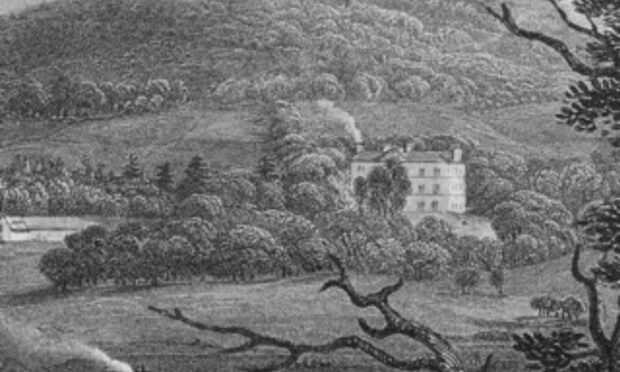
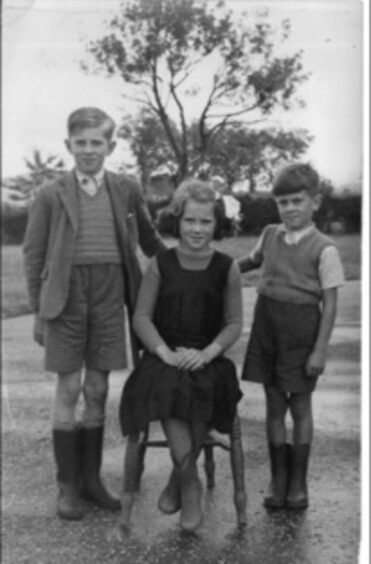
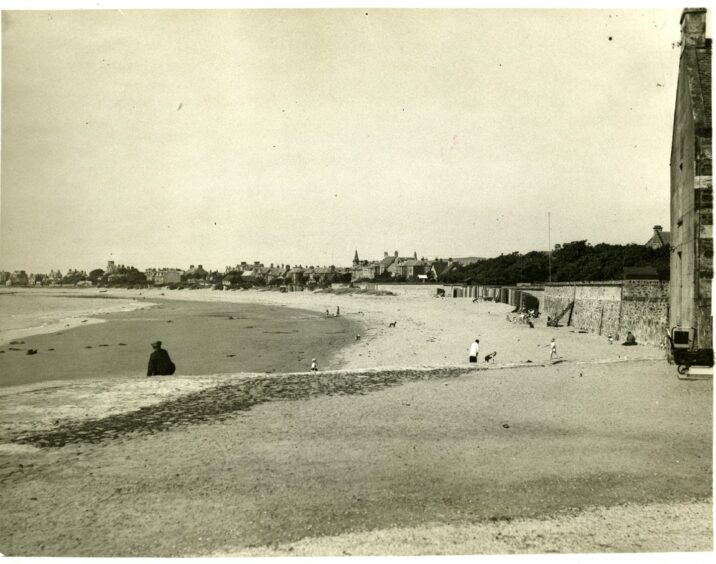
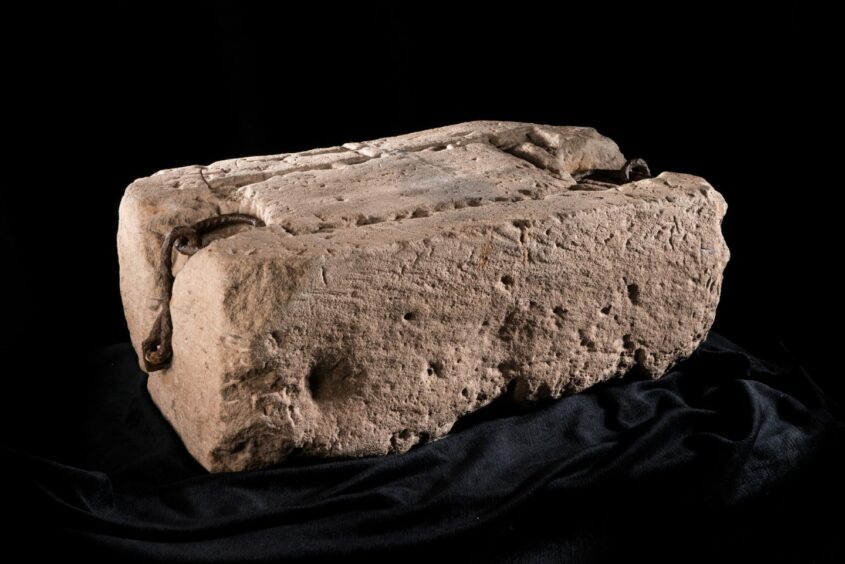
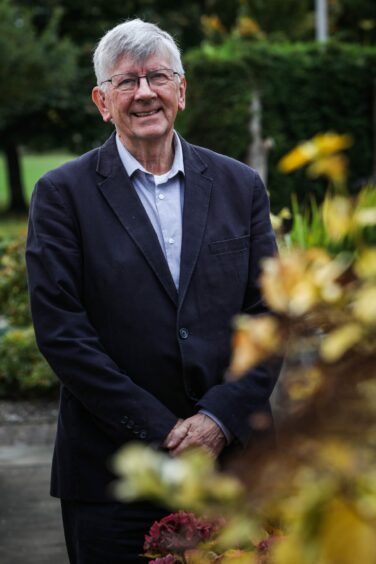










Conversation